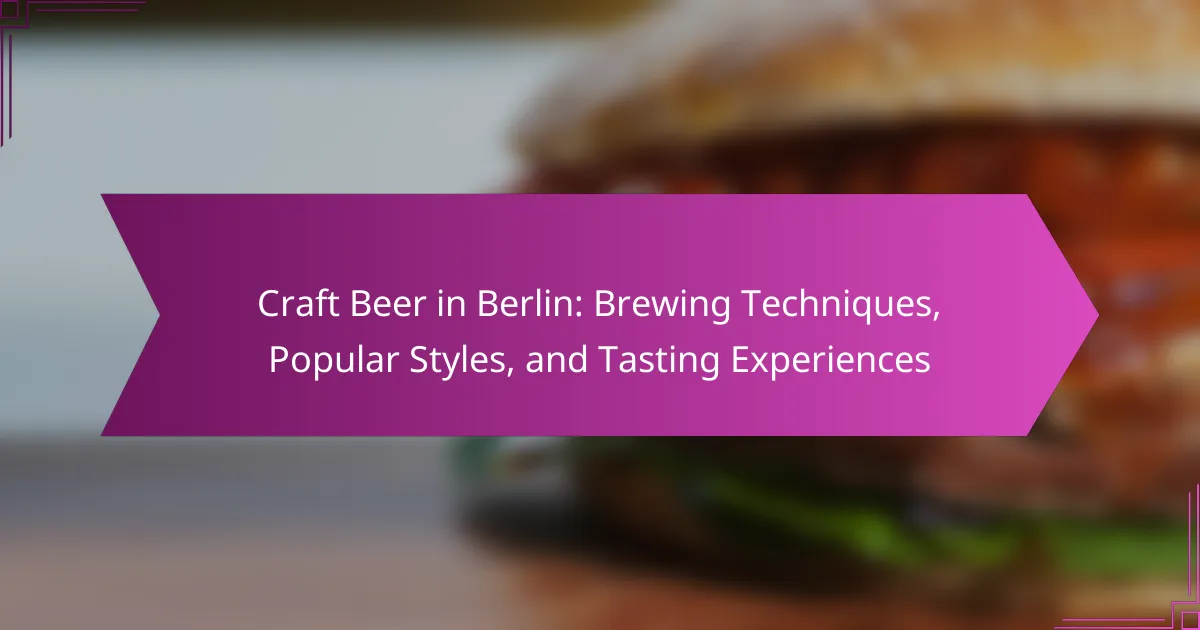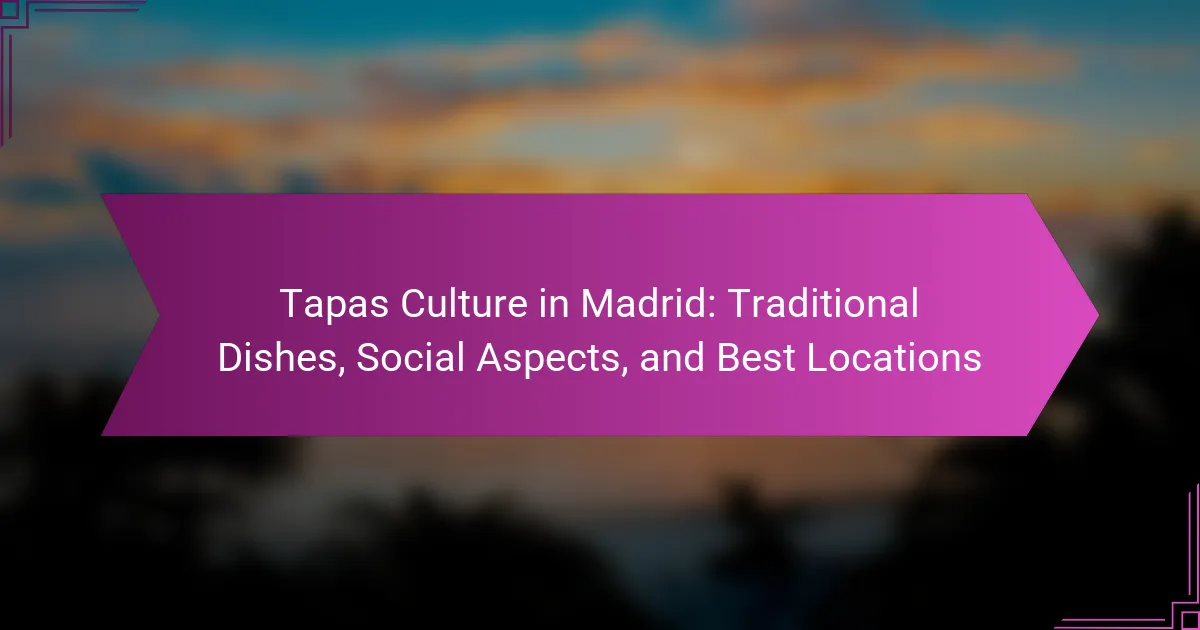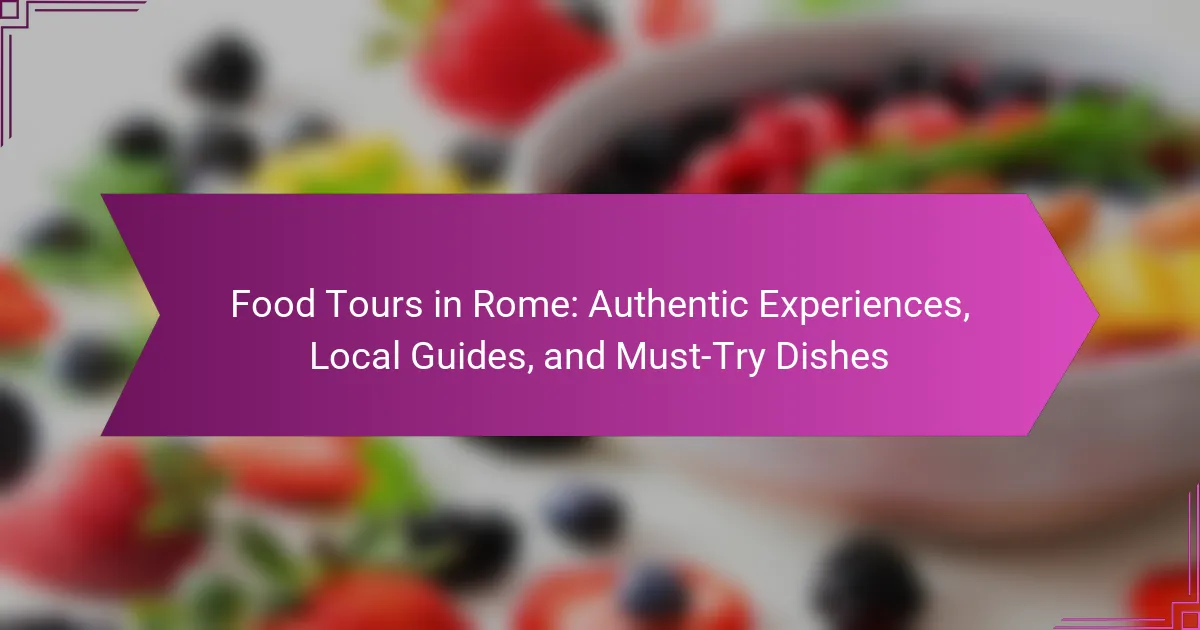Street food in Barcelona offers a vibrant culinary experience filled with local flavours and traditions. Discover popular dishes like tapas, churros, and seafood paella. Explore bustling markets such as La Boqueria, where fresh ingredients and communal dining enhance the food culture. Understand the cultural significance of sharing meals, which fosters social connections among locals and visitors.
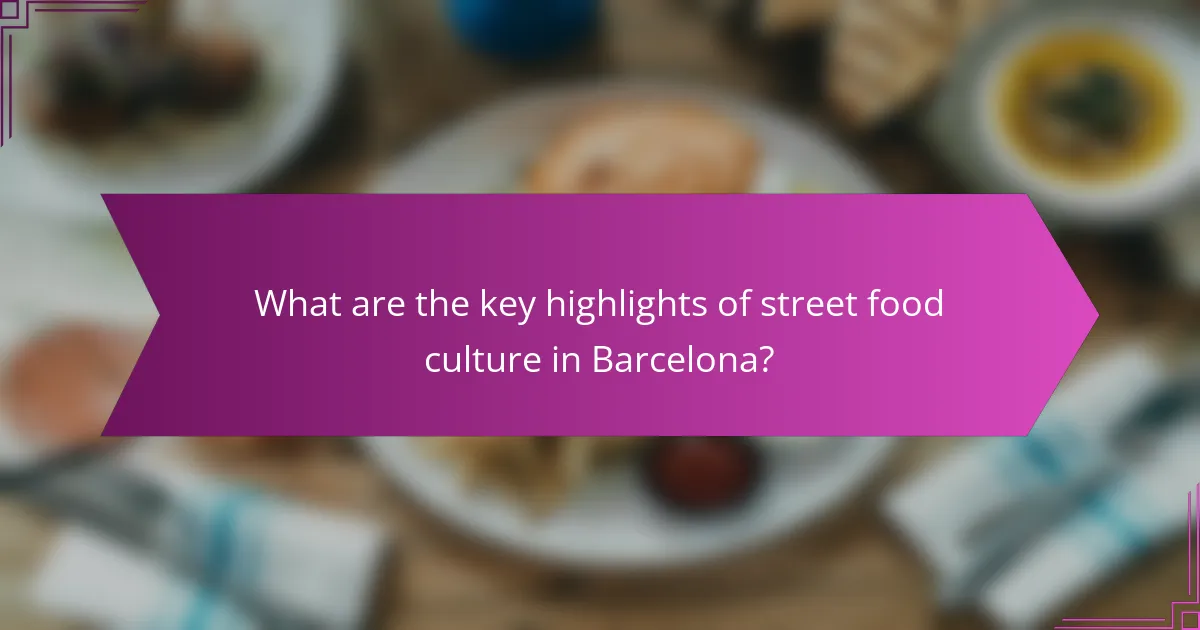
What are the key highlights of street food culture in Barcelona?
Street food culture in Barcelona is vibrant and diverse, showcasing local flavours and culinary traditions. Key highlights include a wide variety of tapas, such as patatas bravas and jamón ibérico, which reflect the city’s rich gastronomy. The bustling markets, like La Boqueria, serve as hotspots for street food enthusiasts, offering fresh ingredients and ready-to-eat dishes. Cultural significance lies in the communal experience of sharing food, fostering social interactions among locals and tourists alike. The fusion of traditional and modern influences creates a dynamic food scene, making Barcelona a must-visit for street food lovers.
How does street food reflect local traditions and customs?
Street food in Barcelona reflects local traditions and customs through its diverse flavours and preparation methods. Dishes like tapas and paella showcase regional ingredients and culinary techniques passed down through generations. Street vendors often serve food at festivals, reinforcing community bonds and cultural identity. The vibrant atmosphere of markets like La Boqueria highlights the importance of social interaction and shared meals in Catalan culture.
What role do food markets play in the street food scene?
Food markets are essential to Barcelona’s street food scene, providing vibrant hubs for local vendors. They showcase diverse culinary offerings, allowing visitors to experience authentic flavours. Markets like La Boqueria and Mercat de Sant Antoni highlight regional specialties, enhancing cultural significance. These venues foster community engagement, promoting local ingredients and traditional recipes.
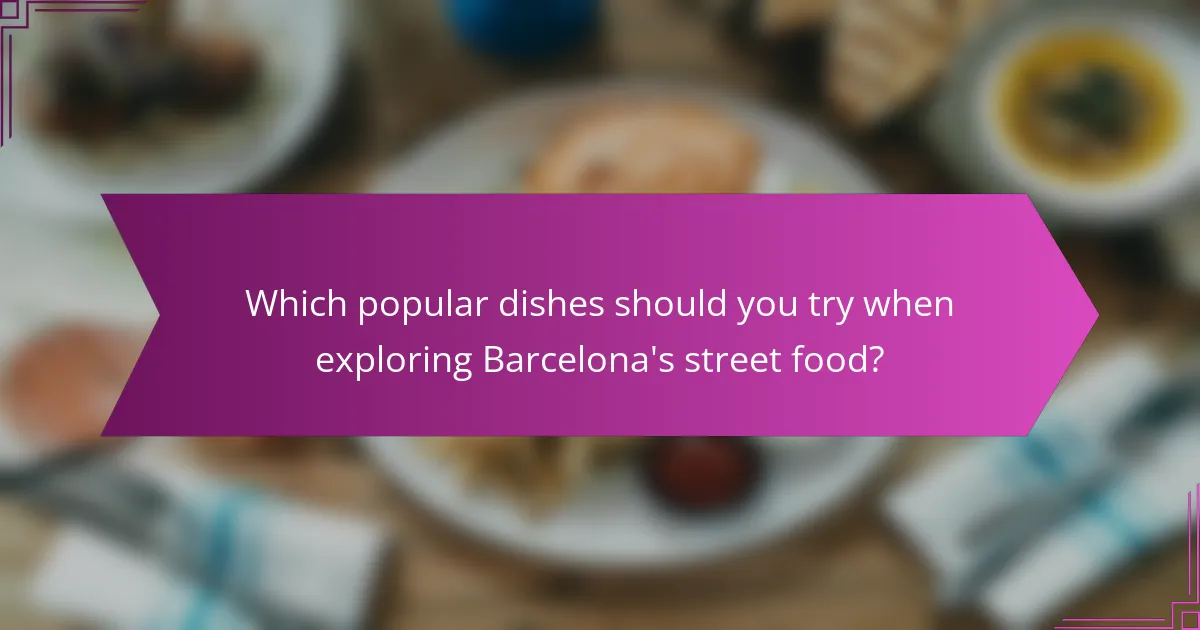
Which popular dishes should you try when exploring Barcelona’s street food?
When exploring Barcelona’s street food, try popular dishes like tapas, churros, and bocadillos. These dishes reflect the city’s culinary culture and vibrant atmosphere.
Tapas are small plates featuring a variety of ingredients, allowing you to sample different flavours. Churros are sweet fried dough, often enjoyed with thick hot chocolate. Bocadillos are sandwiches filled with cured meats or seafood, perfect for a quick bite.
Each dish offers a unique taste of Barcelona’s rich food scene, making them essential for any street food adventure.
What are the must-try tapas and their unique flavours?
Must-try tapas in Barcelona include patatas bravas, jamón ibérico, and pan con tomate. Each dish offers unique flavours that reflect the city’s culinary heritage.
Patatas bravas feature crispy potatoes with a spicy tomato sauce, providing a bold kick. Jamón ibérico, a rare Spanish ham, delivers a rich, savoury taste due to its unique curing process. Pan con tomate combines fresh bread with ripe tomatoes and olive oil, creating a refreshing and vibrant appetizer.
These tapas not only highlight local ingredients but also embody the cultural significance of shared meals in Barcelona.
How do regional ingredients influence street food offerings?
Regional ingredients significantly shape street food offerings in Barcelona, enhancing flavour and authenticity. Local produce, seafood, and spices create unique dishes that reflect the city’s culinary heritage. For instance, fresh seafood from the Mediterranean influences popular items like tapas and paella. Additionally, regional vegetables such as tomatoes and peppers are staples in many street food recipes, showcasing the vibrant agricultural landscape of Catalonia. The use of traditional spices and herbs further enriches the flavour profile, making Barcelona’s street food a true representation of its culture and history.
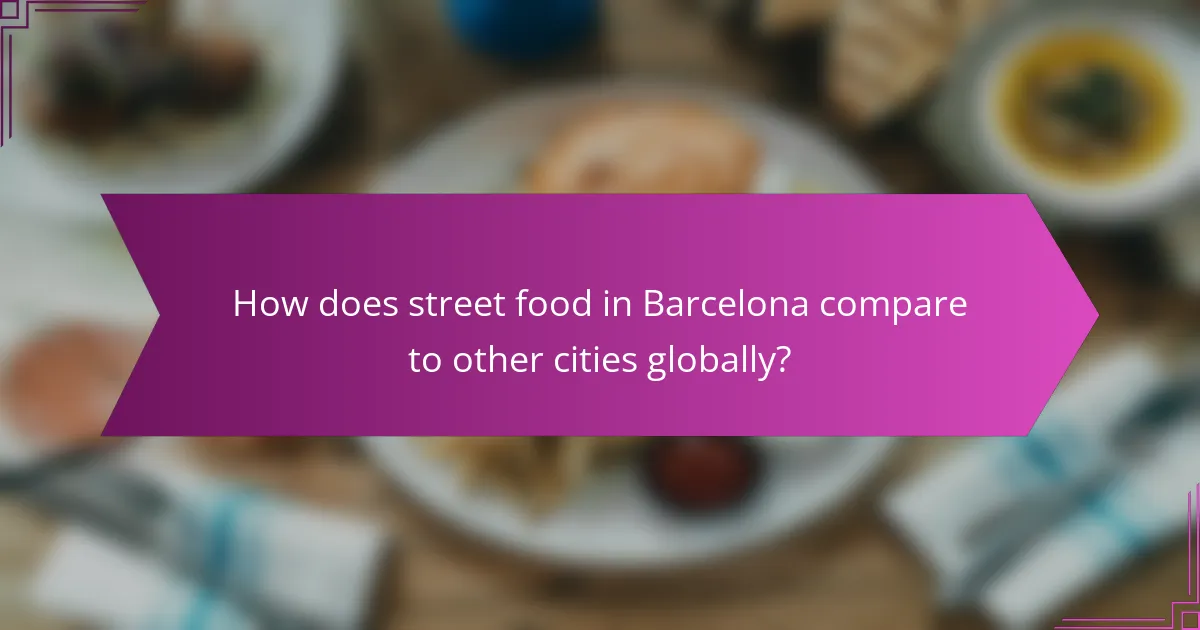
How does street food in Barcelona compare to other cities globally?
Street food in Barcelona offers a unique blend of flavours and cultural significance, distinguishing it from other global cities. The vibrant culinary scene features popular dishes like tapas, churros, and seafood paella, reflecting local traditions.
Barcelona’s street food emphasizes fresh, local ingredients, often sourced from nearby markets. In contrast, cities like Bangkok focus on spicy and aromatic flavours, while New York’s street food scene is diverse, showcasing international cuisines.
Cultural significance in Barcelona is evident through communal dining experiences, where sharing food fosters social connections. Other cities may prioritise convenience or fast service over this communal aspect.
Overall, Barcelona’s street food stands out for its rich cultural roots and emphasis on freshness, offering a distinct experience compared to global counterparts.
What are the similarities and differences in street food preparation?
Street food preparation in Barcelona shares similarities with other cultures, yet differs in unique ways. Common aspects include the use of fresh ingredients and quick cooking methods, emphasizing flavour and convenience. However, Barcelona’s street food highlights local culinary traditions, like tapas and seafood dishes, which showcase regional ingredients. Unique to Barcelona is the influence of Mediterranean flavours and seasonal produce, setting it apart from street food in other cities.
Which cities are known for their vibrant street food scenes?
Barcelona is renowned for its vibrant street food scene, showcasing a mix of traditional and modern culinary delights. The city offers a variety of popular dishes such as tapas, churros, and seafood paella, reflecting its rich cultural heritage. Street food markets like La Boqueria and El Raval provide an immersive experience, allowing visitors to taste local flavours while enjoying the lively atmosphere. The cultural significance of street food in Barcelona lies in its role as a social connector, bringing people together through shared culinary experiences.
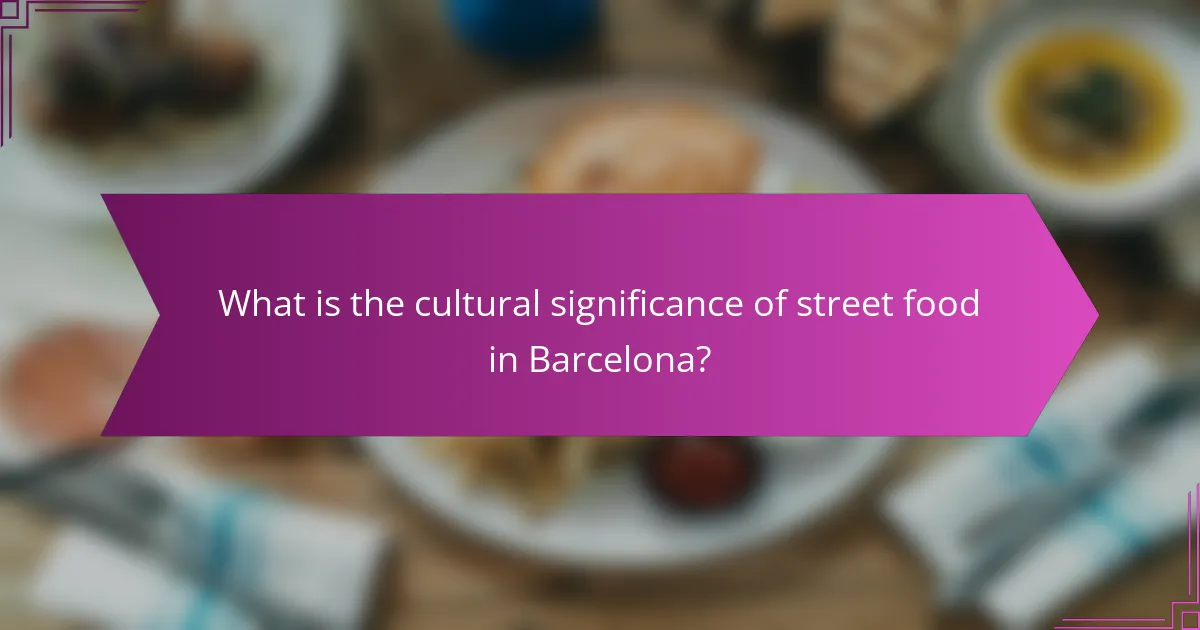
What is the cultural significance of street food in Barcelona?
Street food in Barcelona holds significant cultural value as it reflects the city’s culinary diversity and social dynamics. It serves as a bridge between tradition and modernity, showcasing local ingredients and recipes. Popular dishes like tapas, churros, and seafood paella highlight the Mediterranean influence and the region’s agricultural bounty. Street vendors foster community interactions, creating lively atmospheres in markets and festivals. This unique aspect of Barcelona’s food culture contributes to the city’s identity and attracts both locals and tourists, reinforcing social bonds and culinary heritage.
How does street food contribute to the local economy?
Street food significantly boosts the local economy in Barcelona through job creation, tourism attraction, and cultural exchange. The vibrant street food scene supports local vendors and artisans, generating income and fostering community engagement. In 2022, street food contributed approximately 15% to the city’s overall food sector revenue. This culinary landscape draws tourists, enhancing the hospitality industry and promoting local ingredients. Street food also encourages cultural exchange, allowing locals and visitors to connect through diverse culinary experiences.
What impact does street food have on community and social interactions?
Street food fosters community and social interactions by creating shared experiences and cultural exchanges. In Barcelona, vibrant street food markets serve as social hubs, where locals and tourists gather to enjoy diverse culinary offerings. Popular dishes like tapas and churros encourage communal dining, strengthening bonds among individuals. Additionally, these food venues often host events that promote cultural heritage, enhancing the sense of community. The accessibility of street food also invites participation from various social groups, bridging gaps and fostering inclusivity.
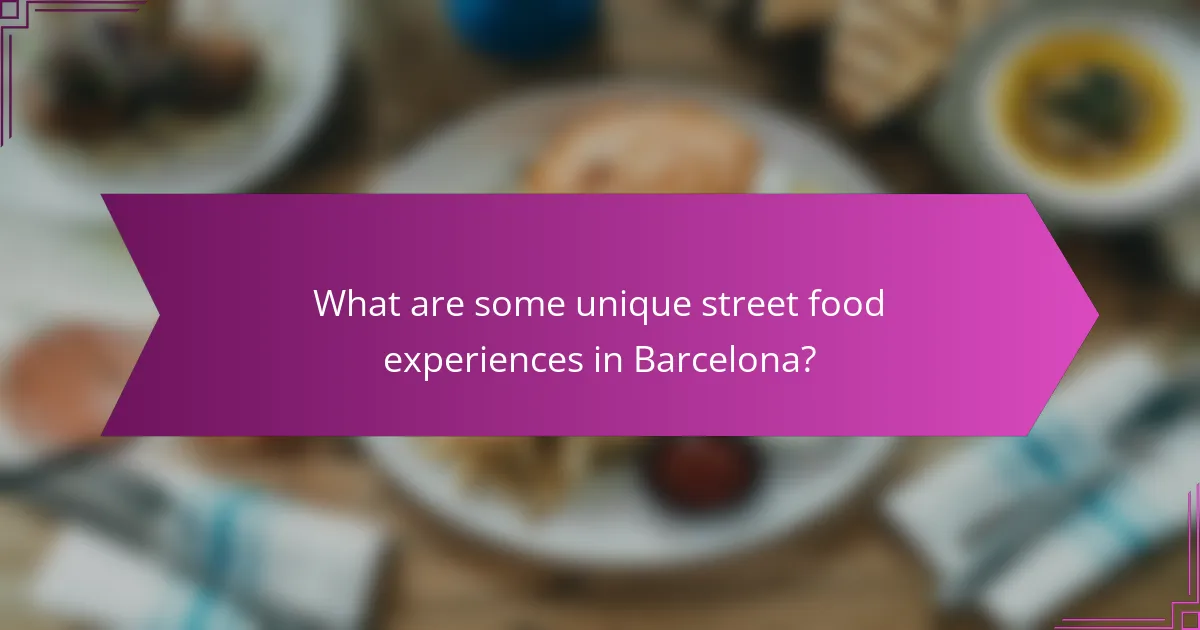
What are some unique street food experiences in Barcelona?
Barcelona offers unique street food experiences, showcasing its rich culinary heritage. Notable dishes include churros with chocolate, patatas bravas, and seafood paella. The vibrant markets, like La Boqueria, enhance the street food culture, allowing visitors to savour local flavours. Street vendors often serve innovative tapas, blending traditional recipes with modern twists, making each bite a cultural exploration.
Which food festivals showcase street food innovation?
Barcelona hosts several food festivals that highlight street food innovation. Notable events include the Barcelona Street Food Festival and the Mercat de Mercats. These festivals showcase diverse culinary creations, emphasizing local ingredients and modern techniques. Visitors can enjoy unique dishes like gourmet tacos and fusion tapas, reflecting the city’s rich cultural tapestry. The festivals also promote sustainability and support local vendors, enhancing the overall street food experience.
How do food trucks differ from traditional street vendors?
Food trucks offer a unique dining experience compared to traditional street vendors. They typically provide a wider variety of gourmet food options, often with a focus on quality and presentation. In contrast, traditional street vendors usually specialize in simpler, more traditional dishes.
Food trucks often have a fixed location or follow specific routes, while street vendors may be more mobile and set up in various locations. Food trucks are often equipped with modern amenities, enabling them to prepare a diverse menu. Traditional vendors, however, may have limited cooking facilities, focusing on quick and easy-to-serve items.
In Barcelona, food trucks contribute to the vibrant street food scene, offering innovative takes on local cuisine. Traditional vendors maintain cultural significance by preserving authentic recipes and cooking methods. Both play essential roles in enriching the culinary landscape of the city.

What are the challenges faced by street food vendors in Barcelona?
Street food vendors in Barcelona face several challenges that impact their operations. Regulatory hurdles often complicate obtaining permits and licenses, limiting vendor opportunities. Competition from established restaurants and other street vendors can affect sales. Additionally, fluctuating tourist seasons lead to inconsistent customer traffic, making income unpredictable. Health and safety regulations require compliance, which can be costly and time-consuming. Finally, adverse weather conditions can deter customers and affect outdoor sales.
How do regulations impact street food operations?
Regulations significantly impact street food operations in Barcelona by ensuring food safety and maintaining public health standards. Compliance with local laws requires vendors to obtain permits and adhere to hygiene practices. These regulations shape the variety of available dishes and influence the overall street food culture. For instance, strict regulations may limit the types of ingredients used or the methods of food preparation, thereby affecting traditional recipes.
What are common misconceptions about street food hygiene?
Many misconceptions about street food hygiene exist, often leading to undue concern. A prevalent belief is that street food is inherently unsafe, while many vendors adhere to strict hygiene standards. Another misconception is that food prepared in open-air settings is less sanitary, despite regular inspections by local authorities. Additionally, some people assume that cooking methods used in street food do not meet safety guidelines, yet many dishes are cooked at high temperatures that eliminate harmful bacteria. Lastly, the idea that street food lacks freshness is misleading, as many vendors source ingredients daily from local markets, ensuring quality and taste.
What are best practices for enjoying street food safely?
To enjoy street food in Barcelona safely, choose vendors with high turnover and clean environments. Pay attention to food preparation and storage practices.
1. Select busy stalls, indicating popularity and freshness.
2. Inspect food handling; ensure vendors wear gloves and maintain cleanliness.
3. Avoid raw or undercooked items to reduce health risks.
4. Stay hydrated and consume food promptly to prevent spoilage.
